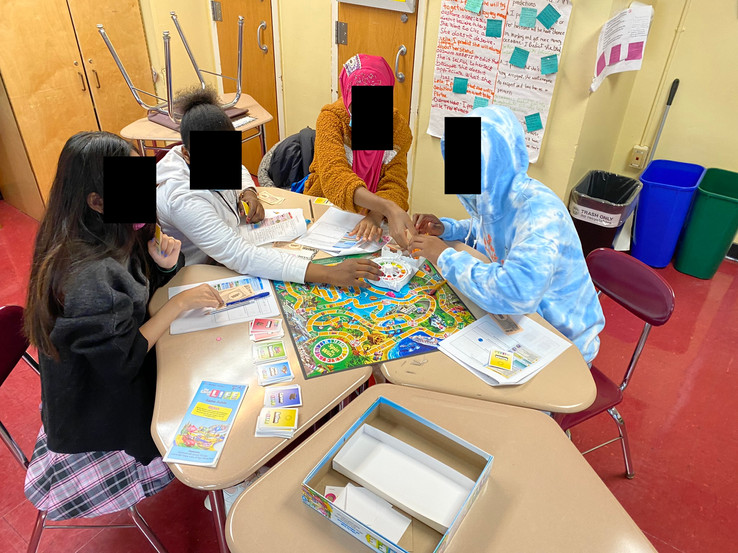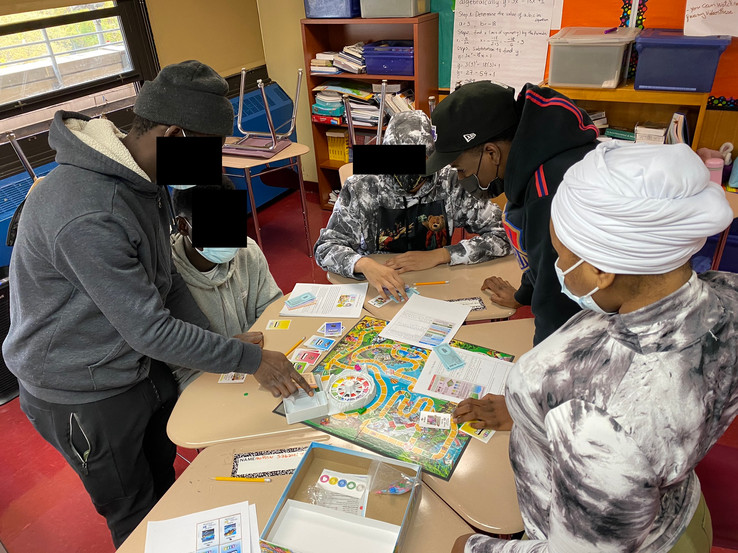I Taught With The Game of Life
- Zack
- Feb 14, 2022
- 6 min read
What's going on everyone?
The subjects I teach rotate every year. One year I will teach United States History and then the following year, I teach Economics and American Government. This year I am teaching the latter and unfortunately, I am not too personally familiar with many video games that I can properly use in my class to teach economics concepts. So, I decided to step out of my comfort zone a little bit and looked towards board games instead. My first big unit for the year was on personal finance and I thought this could be a really cool opportunity to create a summative project where students play and critique The Game of Life, one of the most popular board games in American history. You can find my lesson plan for The Game of Life here.

There are different versions of the game that exist. My project used a version where the rules are simplified and is easier to setup than the normal version of the game. I intentionally chose this version because I didn't want to waste too much time setting up the board each class day. You can find the version I used here.
The content aim for the lesson is "How true to reality is The Game of Life’s portrayal of personal finance?" Two of the other essential questions for the unit were:
In what ways are the financial consequences of someone’s actions & personal choices often in or out of their control?
How would you modify the game (rules, action cards, careers, etc) in order to make it a better representation of real life.
I wanted my students to take the knowledge of what they have learned about credit cards, medical care, budgeting, cost of children, savings, interest, retirement, debt, etc. and explain how they are represented, misused, or absent in the game. If something is misrepresented, or not even present, then they needed to offer a potential changes to the rules in order to make the game more realistic. This ultimately lead to a full class conversation in a Socratic Seminar and an argumentative essay where they need to argue about whether or not the game is realistic. (Note: I'm not going to share their essays here because we actually ended up doing a combined interdisciplinary project with their ELA class where they had to make connections between The Game of Life and The Necklace, the book they were reading in their ELA class at the time).
Before we started playing the game, I spent an entire day with my classes only going over the rules. I teach a one hundred percent English as a new language population so I wanted to make sure that everyone had a proper understanding of the rules before jumping in. Again, the rules here are for this specific version of the game. You will need to modify this portion of the lesson if you end up using a different game. We also spent time reading about the different cards in the game. Even while just reading the rules, the students were also noticing factors in the game that don't financially make sense; like receiving $50k at the end of the game for each baby they had.
I broke my classes up into two or three groups. This version of the game is technically only up to four players, so I had students work in pairs. Each board had between four to eight students total. The first big decision the students needed to make was whether or not they were going to attend college. The students who wanted to attend college needed to pay $100K upfront and then proceed down the "College Path." Students who did not want to go to college did not need to pay anything and the begin on the "Career Path." Choosing to go to college does set those students back some money and it took them longer to begin earning money, but their jobs did have higher salaries. The students who pursed a career immediately received money more quickly in the beginning, but their salaries were lower. We had previously had many discussion about the cost of college and what it means to take on student debt. Most students still wanted to pursue the college education, but others were more hesitant because they did not want to have any student debt weighing them down.
We managed to finish playing the game over the course of two 90 minute periods. While they were playing, they were tasked with documenting aspects of the game that they felt were realistic and unrealistic. Some of the things students mentioned were realistic were
Taking a risk and investing money
Spending a lot of money on an education and earning a higher salary for having more education
Paying to go on vacation
Some players losing their jobs
Having an opportunity to go night school
Buying homes and selling them later on
Saving money for retirement
Some aspects of the game that they felt were unrealistic were
Earning money from the Action Cards even though you didn't really do anything to deserve it
Making money by having babies
No one pays taxes in the game
People obtain a new job right after being fired from their previous one even though it may take a while in real life to find a new place to work
After finishing the game, the students had to offer potential changes they would make to the game board or rules in order to make The Game of Life a better representation of real life. The prompts I provided them were
What rules would you add, remove, or modify?
What Action Cards would you add, remove, or modify?
What Career Cards would you add, remove, or modify?
What Spaces would you add, remove, or modify?
The most common aspect of the game that students wanted to change was the reward for having children in the game. The game actively encourages players to have children by rewarding them with $50K for each child. The students noted that it really isn't like that in real life at all. There may be some opportunities for tax credits in real life, but generally speaking you will be spending thousands of dollars each year on children. Adding spaces on the game's board for medical emergencies and taxes were two other popular changes that students wanted to make. Everyone pays taxes in real life and most of the students felt that should be incorporated into the game. Medical emergencies and health care are also very expensive in the United States. The noted that it would be odd to go through your entire life without ever needing to pay to go to the doctor or hospital.
What you don't see in the attached images are all of the students' research and citations. When they wrote their final papers they needed to provide evidence that illustrated which parts of the game were realistic, the parts that were unrealistic, and why their changes to the game would make it more similar to real life. So if a student mentioned that they wanted to add taxes into the game, then they needed to figure out how much taxes people in different salary brackets would need to pay. If they wanted to add medical emergencies then they would need to find what the average cost of medical care is for Americans or how much medical debt the average American holds. If they wanted players to pay money for each child they had in the game, then they needed to find evidence that showed what the average cost of a child usually is in the United States.
This research aspect of the project forced students to think more closely about the changes they wanted to make in the game. They couldn't just add something for no reason. They needed to be very deliberate when making their modifications to the rules. Most of this evidence came out of the many articles we read over the several weeks before playing the game. They had plenty of prior knowledge ready to access.
This ended up being some of the most fun we have had over the past two years. Last year my school was entirely remote. The school year consisted of me teaching on Zoom to a bunch of black boxes. There was very little interaction and only some students felt comfortable speaking or showing their faces. Most only wanted to write in the chat. This year has been extremely refreshing as we are finally all talking to each other again. And bringing in a game made class fun. It was incredibly interactive and students were having a great time. That in combination with their learning made for a fantastic summative assessment to a personal finance unit. It has definitely inspired me to continue finding ways to bring board games into my classroom. Don't get me wrong, video games are still my thing, but board games clearly have their place in education as well and I hope more teachers will begin to use them.
Thanks for reading,
Zack
Consider subscribing if you would like to stay more up to date with posts like this. It's free!
I also recently published 2 books on teaching with video games. I hope some of you get the opportunity to check them out some day.
I also have a Patreon page where people can support the work done here on Hey Listen Games. Consider becoming a pledge to get set some perks! Supporting at the $1 tier gets you early access to these blog posts.







































